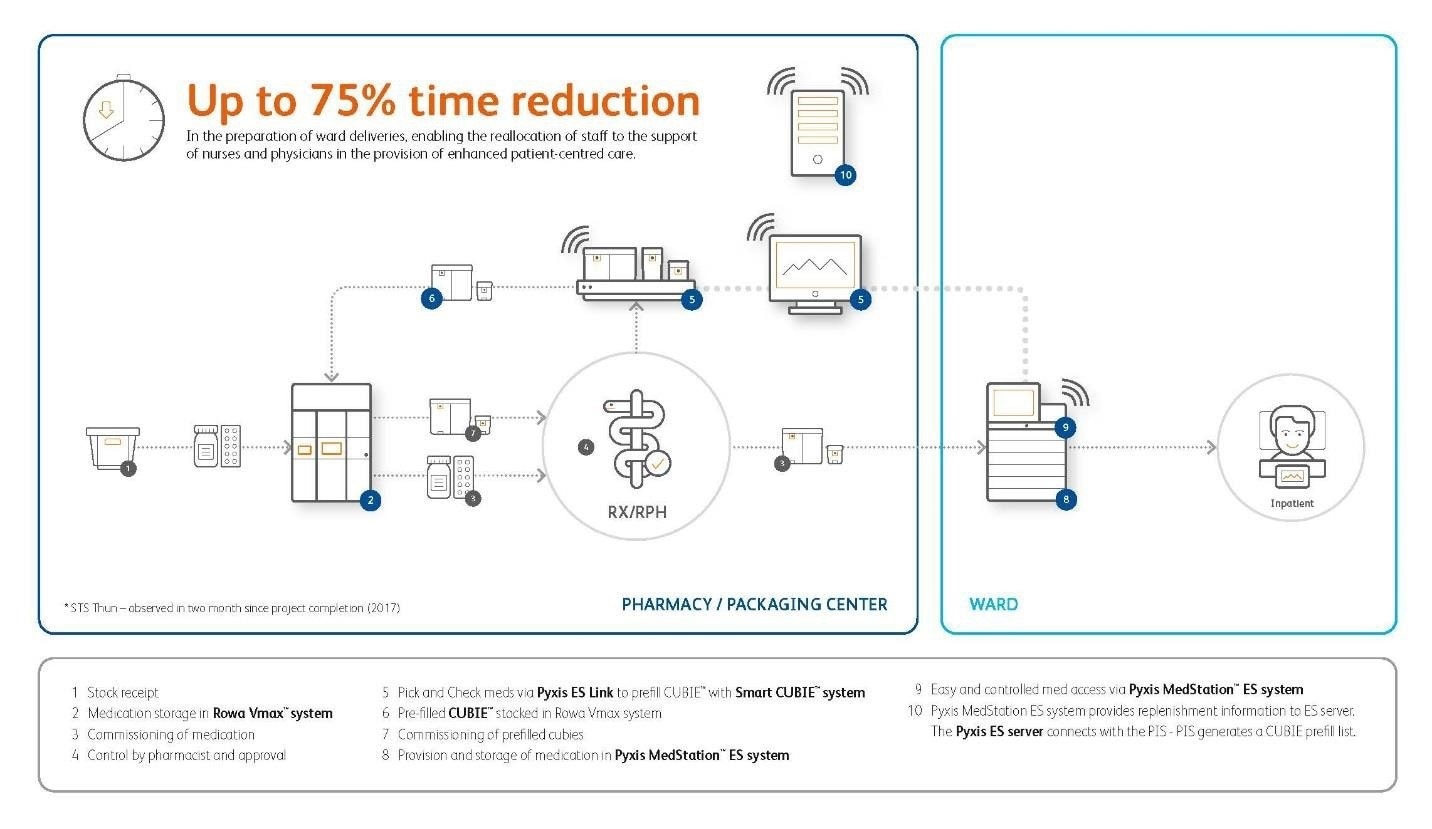BD (Becton, Dickinson and Company), a leading global medical technology company, today announced the STS AG Hospital in Thun, Switzerland has become the first hospital in the world to introduce a fully automated hospital wide prescription medicines supply chain, enabling, safe, secure, timely and efficient delivery of patients’ medicines from the central pharmacy to the ward or care unit. The increased automation reduces the risk of preventable medication errors and helps to improves safety for patients across the hospital.

“This additional level of automation has allowed the central pharmacy team at Thun Hospital to optimise our workflow efficiency” says Dr. Barbara Portner, deputy head pharmacist at STS AG Hospital. “In turn, this further decreases preventable errors when dispensing medicines to the wards and ultimately increases medication safety for the patient at all points of care.”
The hospital has been using the Pyxis MedStation™ system from BD to automate its medication dispensing to patients on its wards since 2001. The Pyxis MedStation system provides secure storage of drugs on the ward and facilitates improved patient safety and efficiency in medication dispensing.
Ward staff can call up the drugs prescribed by the doctor directly on the Pyxis MedStation screen and only those drugs are dispensed, ensuring the right drug is going to the right patient in the right dose at the right time. Individual drugs are stored in separate drawers and pockets called a Pyxis CUBIE™ pocket.
If the stock is low in any of the CUBIE pockets, the Pyxis MedStation station immediately sends a replenishment order to the hospital pharmacy. Thun Hospital has a total of 15 of the latest generation Pyxis MedStation™ ES systems across all of its wards.
Traditionally, medication dispensing cabinets are manually filled and replenished with drugs by the hospital pharmacy. When a replenishment order came into the pharmacy, the pharmacy technicians would go to the proper shelf in the pharmacy to get the correct drug and fill a new CUBIE that was then sent to the proper Pyxis MedStation system that sent the restocking order.
By working in collaboration with BD, new interfaces have been developed that enable direct communication between the Pyxis MedStation ES medication dispensing cabinets on the wards and the Rowa Vmax™ robotic inventory management and dispensing system in the hospital pharmacy. The newly developed interfaces allow new refill orders for the individual Pyxis MedStation ES systems to be sent automatically via the material management system and pharmacy validation to the Rowa Vmax™ system.
The Rowa Vmax can store the pre-filled CUBIE pockets and its robotic arm picks the CUBIE pocket that contains the refill order and dispenses it to be sent to the correct Pyxis MedStation ES system. Because the Rowa Vmax has a large storage capacity, it can handle the bulk of a refill order independently and make the medications available faster and more efficient than before with manual picking by the pharmacy staff. This allows pharmacy staff to be available during busy periods to devote to direct patient care and to be more flexible to carry out the CUBIE refill within less busy times.
Jason Strohm, worldwide vice president and general manager of Dispensing and Preparation Technologies for BD says:
BD is committed to improving patient safety by reducing medication errors across the care continuum. Our integrated solutions, combined with the expertise and knowledge of our team are helping care providers around the world to streamline their medication management workflows and optimise the cost of ownership. Thun Hospital is setting new standards of care by embracing innovation and new technologies, and we are very proud to be working with them to achieve their goals.”